.png)
With the advent of the novel coronavirus earlier this year, most people in the country have undergone drastic lifestyle changes in order to prevent putting themselves and others at risk. And while many businesses are beginning to open back up and we’re seeing things go back to normal, policies like “social distancing” and “safer at home” are likely to continue for quite some time.
Although these policies are intended to keep people safe, sometimes they can have the opposite effect. Spending too much time at home and away from people has well-documented adverse side-effects and some people are combating this by spending more time than normal outside exercising — this wouldn’t be a problem if it weren’t for the heatwave that’s currently spreading across much of the country.
Under normal circumstances, people could go to public areas like theaters or restaurants to seek relief from the heat, but instead, they’re being forced to choose between being cooped up in a non-air conditioned home or being outside under the hot sun. This issue is amplified for people with COPD and other chronic respiratory illnesses because the heat can lead to many different complications.
In order to help you prepare for the hot summer ahead, we’re going to give you 7 helpful tips for preventing heat-related COPD complications. If you still have concerns about coping with the change of weather, be sure to contact your doctor immediately to see if he/she has any additional recommendations for you. Remember that any changes to your treatment plan should first be approved by your doctor.
{{cta('b59df0c1-c4de-47a8-8e1c-0d33d4b414aa','justifycenter')}}
How Heat Affects COPD
Your body works around the clock to maintain a normal temperature. The ideal temperature for most people is between 97°F (36.1°C) and 99°F (37.2°C), but it may vary slightly depending on the person’s age and gender. If someone’s body temperature goes above this threshold, it’s usually a sign of an infection, illness, or heatstroke.
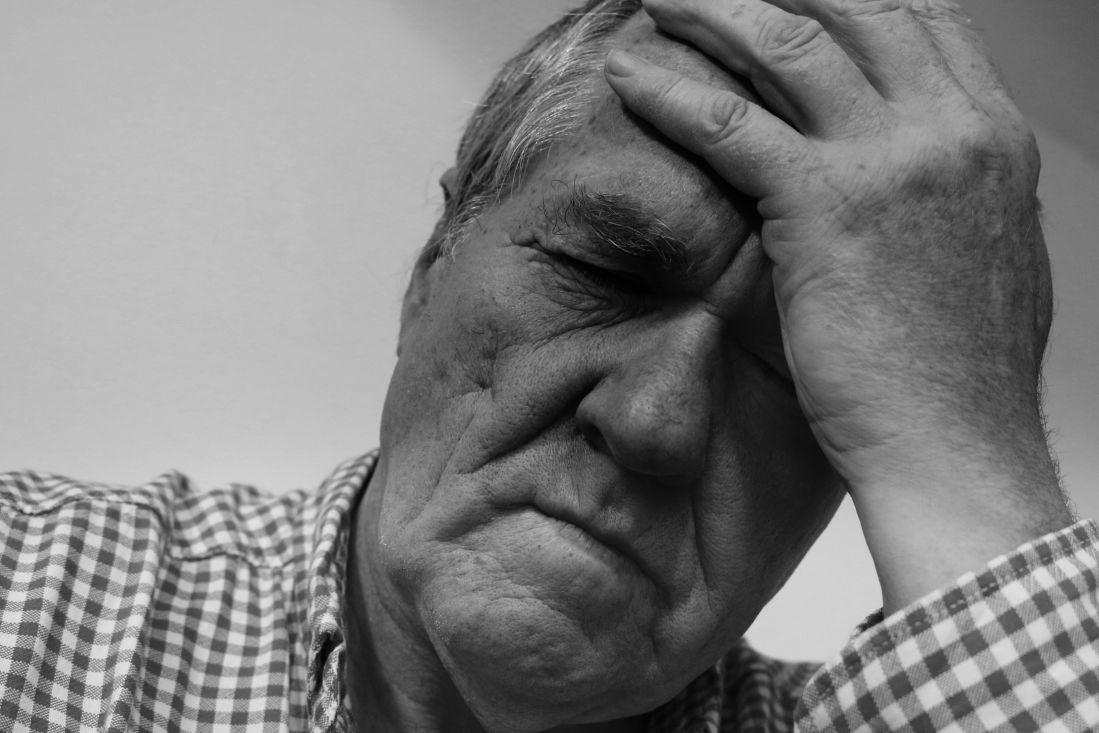
When someone is exposed to high temperatures for prolonged periods of time, it can result in something called a heat injury. This may result in symptoms such as confusion, disorientation, and cramps. If the heat is sustained for long enough, it could result in serious health complications like heat exhaustion, heatstroke, or heat edema (swelling of the hands and feet due to water retention).
One heat-related illness that’s of particular concern to people with COPD is heat tetany. This refers to a short period of stress characterized by hyperventilation (breathing very heavily and quickly), respiratory problems, and muscle spasms as a result of heat exposure. This can even cause something called bronchospasm which is a sudden constriction of the muscles in the walls of the bronchioles in the lungs.
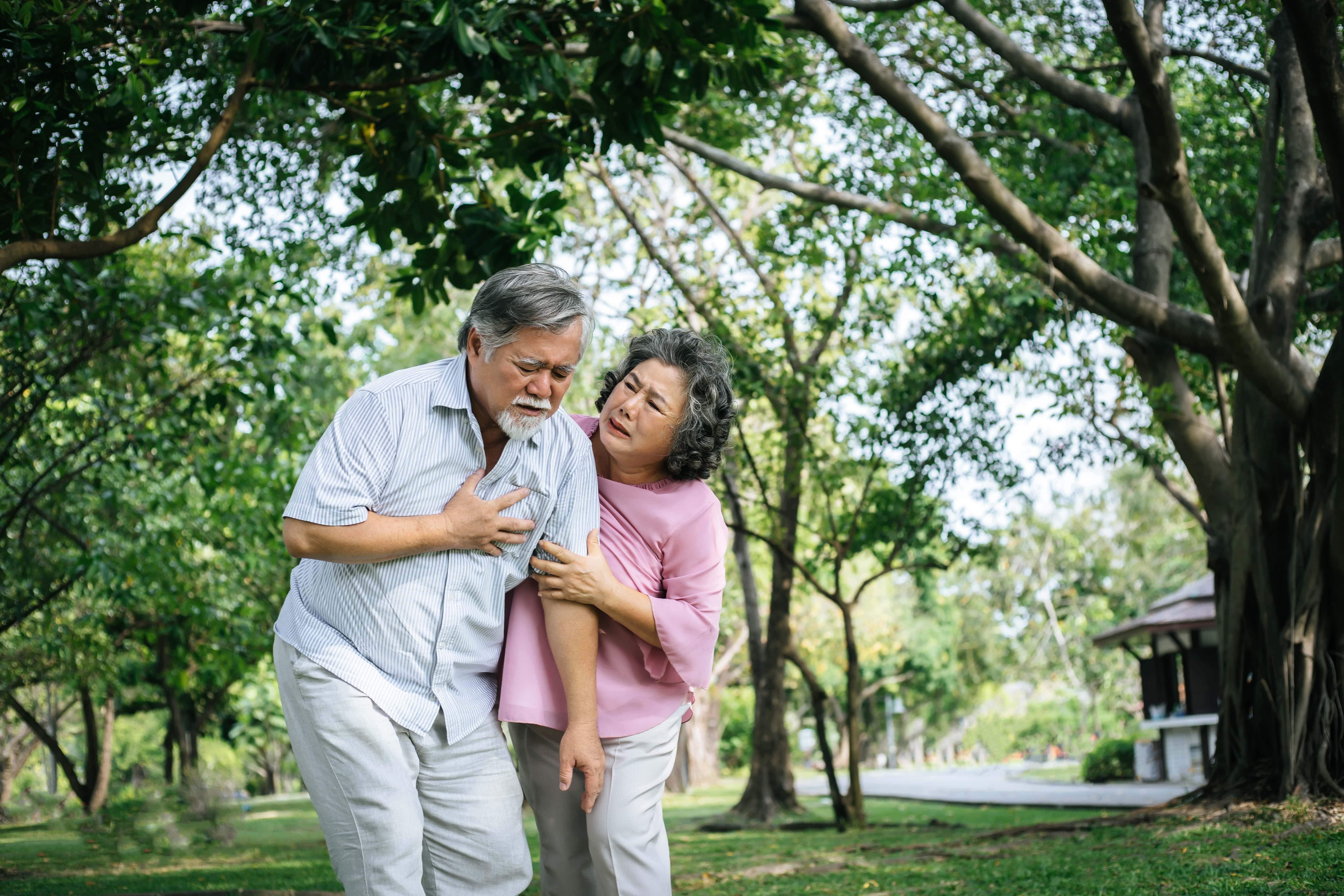
Another way the heat can affect your COPD is through high humidity which often accompanies it. If you’ve traveled to or live in the south, you’re probably well-acquainted with the feeling of being in a hot and humid climate, but the truth is, humidity can be found anywhere depending on the time of year. Humidity has some beneficial effects on the body, but due to its density, it can increase airway resistance and even make it harder for your body to stay cool making it a nightmare for anyone with COPD.
How to Prevent Heat-Related COPD Complications
Stay Hydrated
Proper hydration is one of the most important things you can do for your health and it’s especially important for COPD patients who live in a hot environment. COPD is characterized by excess mucus production which often becomes thick, sticky, and difficult to clear. If you’re dehydrated, it can make it even harder to remove this problematic mucus from the lungs and airways.

Another reason to stay hydrated is because water is the most important substance involved in maintaining our body temperature. When we start to overheat, our bodies secrete sweat which evaporates and lowers our body temperature. While more than half of the human body is water, we lose up to 3 quarts of water each day from breathing, urinating, and sweating, so it’s imperative that we drink enough to maintain every important function in the body.
Schedule Your Walks
Walking is one of the best exercises you can do for COPD. It helps to increase your pulmonary function, build muscles in your legs and arms and gives you the opportunity to practice your breathing techniques. However, walking outside during the hottest time of day can put you at a higher risk of experiencing a heat stroke or other heat-related injuries.
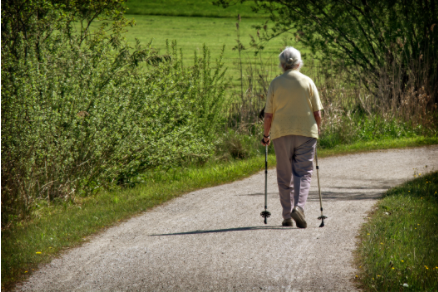
Fortunately, with some careful planning, you can be sure to avoid this. In the summer, the hottest time of day tends to be from noon to around 3 or 4:30, so it’s best to schedule your walks around this. Try to schedule your walks for early in the morning when the sun is up but hasn’t been out long enough for it to get too hot.
Another thing you should do is keep an eye on your local forecast. Although you can go for a walk when the skies are clear, it’s even better to go when there’s some cloud coverage. Clouds block a lot of the UV rays from the sun, especially the most harmful UV-B rays which put you at a lower risk of overheating or getting sunburned. However, you should still be sure to wear sunscreen every time you go out.
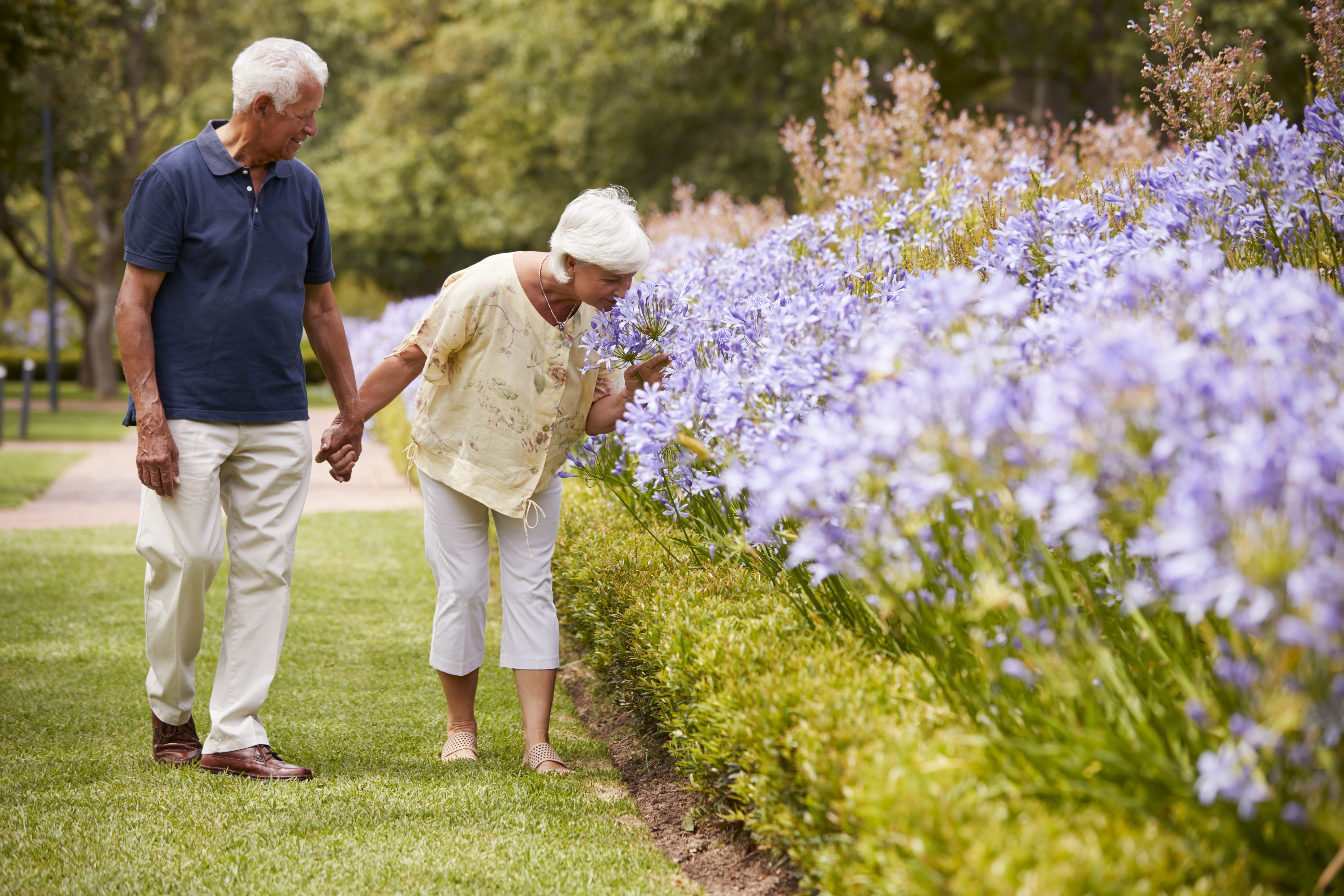
One final reason to schedule your walks is to avoid the busiest times of the day. As aforementioned, there are a lot of people outside trying to enjoy the nice weather. Some people are out mowing the lawn or doing other yard work which can cause a lot of allergens to mix into the air. You can also keep an eye on the pollen count forecast to avoid allergy triggers in your area. Ultimately, avoiding these airborne irritants will help you manage your COPD symptoms more easily.
Don’t Over Exercise
While exercise is a very important part of treating COPD, it’s also imperative that you learn to recognize the signs of overexercising. This is especially true when it’s so hot outside because it may happen a lot faster than you’re expecting it to. As a result, it’s a good idea to keep a close eye on exactly how much time you spend exercising.

According to the Cleveland Clinic, COPD patients should gradually work up to exercising around 30 minutes a day, at least three days a week. Exercise will help improve your circulation, strengthen your heart, lower blood pressure, improve COPD symptoms and much more.
If you enjoy exercising outside, be sure to check the weather at the beginning of the week and plan out what days and time you will exercise. It’s recommended that you follow each workout day with a day of rest, but if you need to workout two days in a row to avoid the heat, this can be considered too.

Another thing you should do is play it by ear. Heat exhaustion is characterized by fatigue, restlessness, dizziness, and muscle cramps. So, if you experience any of these symptoms throughout the week, it’s a good idea to change up your workout schedule in order to recover. If these symptoms continue, be sure to consult your doctor.
{{cta('fa8abc2a-1e88-4fa3-82fd-1cb5b9ed43b2','justifycenter')}}
Change Your Wardrobe
Believe it or not, the clothes you wear can have a huge impact on your ability to stay cool on a hot day. First and foremost, you should wear loose-fitting clothing. Cotton t-shirts and shorts tend to be your best bet because they are lightweight, breathable, and won’t make you feel like you’re suffocating.
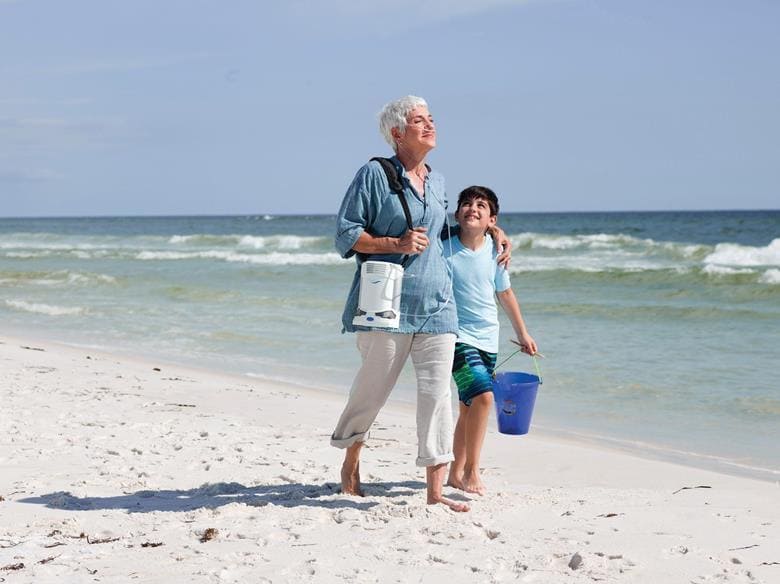
When it comes to footwear, sandals or a more breathable pair of tennis shoes are great options. Sandals are great if you don’t want to wear socks and retain extra heat. But if you want a little more arch support, you can wear a light pair of tennis shoes with thin socks.
To top off your wardrobe, try wearing a baseball cap or gardening hat which will help to keep the sun off your head, face, and neck. These areas tend to be the most vulnerable to heat injury and you’re more prone to feel delirious, noxious, or even lose consciousness if your head is exposed to too much sun and heat.
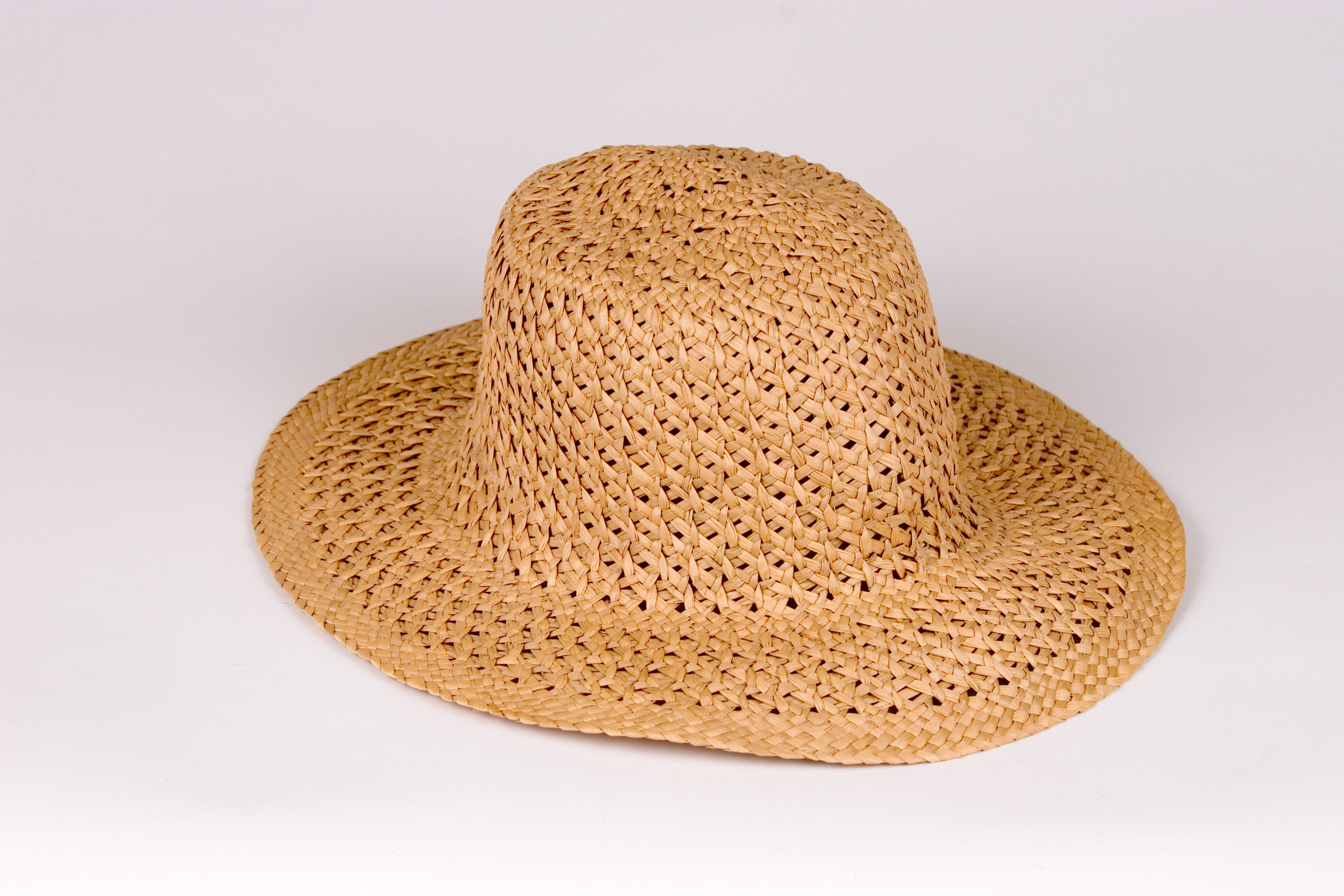
Keep an Ice Pack Handy
One simple way to keep cool during the summer is to keep an ice pack handy to lay on your skin if you feel like you’re overheating. It’s best to have multiple ice packs so that you can have a backup. Then when one melts, you can simply go to the freezer and swap it out with another one. If you don’t have an ice pack, you can fill a bag with ice and this will work just as well.
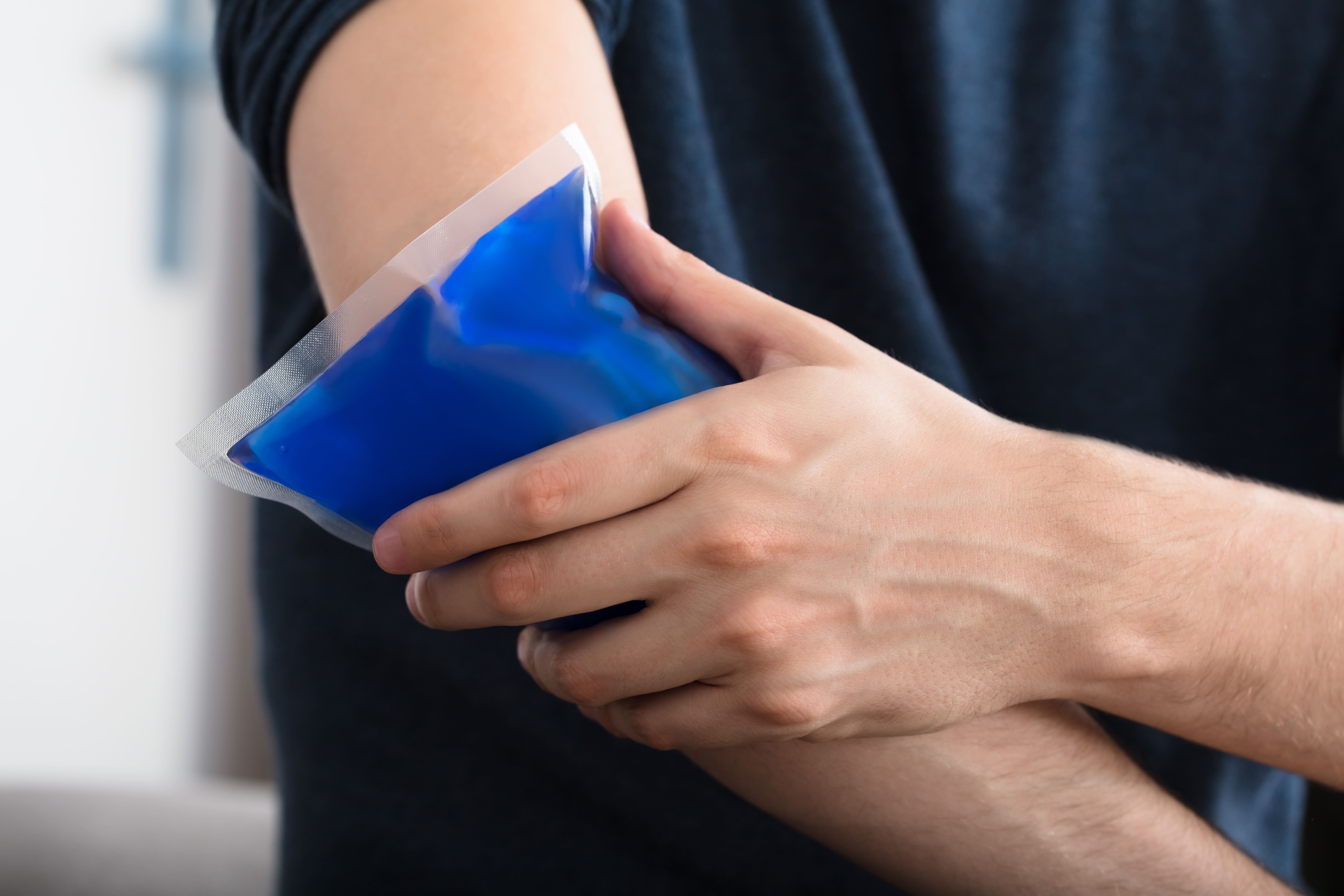
One thing to note before trying this is that ice can cause frostbite or ice injury if it’s applied directly to the skin for prolonged periods of time. This can lead to numbness, itchiness, or pain and can even lead to damaged blood vessels and reduced blood flow. To prevent this, try wrapping the ice pack or bag of ice in a cloth towel. Ultimately, the goal is to lower your body temperature slightly, you don’t want the ice to be so cold that it stings or causes numbness on your skin.
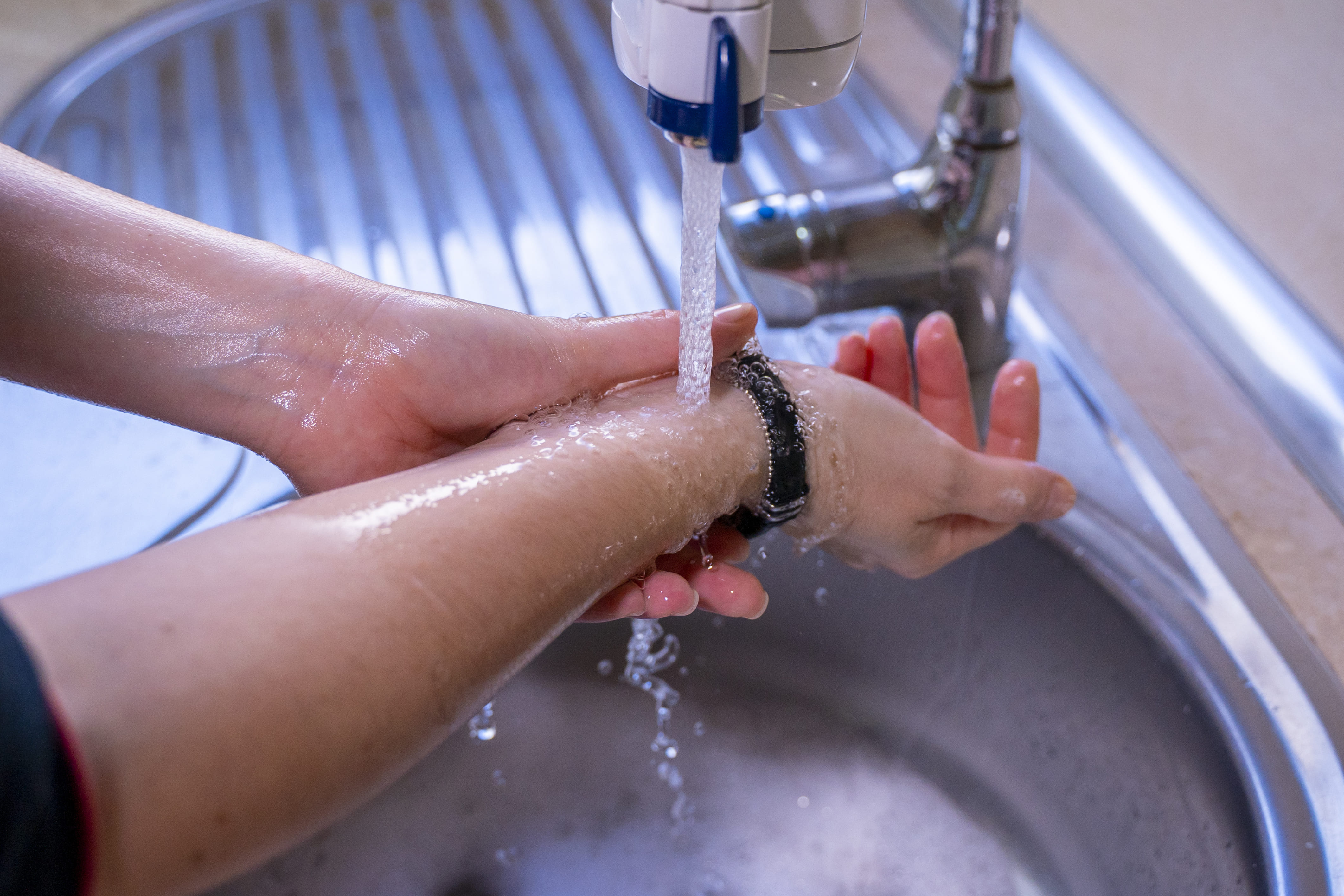
If you don’t have access to ice or ice packs, cold water can be an effective alternative. Simply rub some water on your legs, arms, chest, or face, and rather than wiping it off with a rag, let it evaporate off. If you do this too much, however, it could dry out your skin, so be sure to do it in moderation and keep some lotion handy to help your skin retain moisture.
Avoid Hot Foods and Beverages
While it may be tempting to indulge in burgers, hot dogs, or barbeque during this time of year, it’s generally best to avoid them if you want to keep your body temperature down. Hot foods and beverages are comforting all times of the year, but they don’t help when it comes to managing your body temperature and they can make COPD symptoms worse.
Another reason to avoid hot foods is because they can increase the temperature of your home. Running the stove or the oven for a long period of time not only raises the temperature in your kitchen, but it can raise the temperature of your whole home. If you’re looking for great food to eat in the summer, it’s better to reach for something like fruits or vegetables which tend to have high water content meaning they’re refreshing and they’ll keep you hydrated.
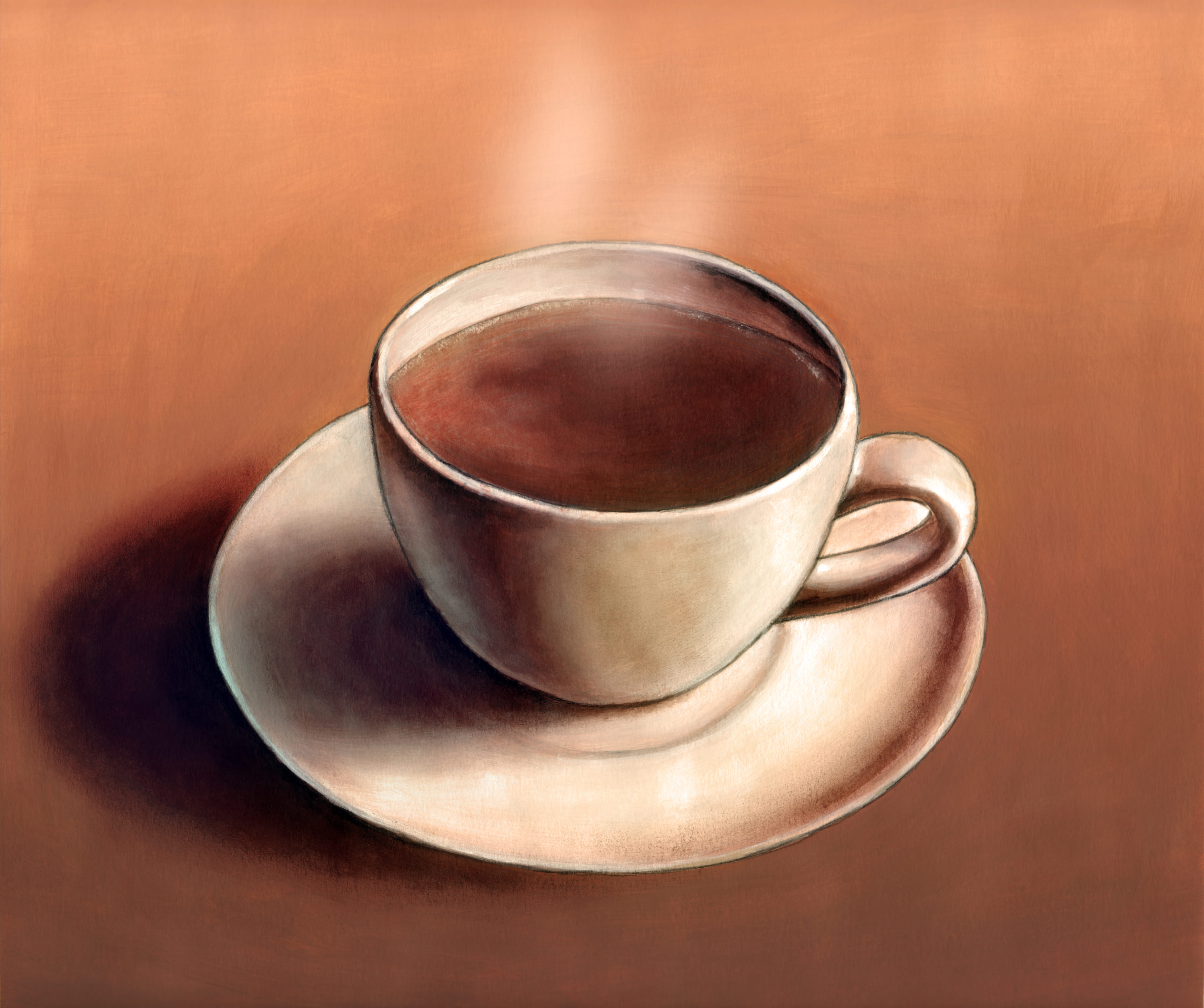
Hot drinks like coffee or tea are another thing to avoid this time of year. While this little boost of caffeine may help you wake up in the morning, there are better ways to do this that won’t have potential side-effects on COPD.
{{cta('43b79c5e-6bd6-4f02-ac27-2d038d20c146','justifycenter')}}
Quit Smoking Immediately
According to the Centers for Disease Control and Prevention (CDC), about 38 percent of COPD patients report being current smokers. This is astonishing considering that about 80 percent of deaths due to COPD could have been avoided without smoking. One thing that many people don’t realize is that smoking when it’s hot out may amplify the negative effects.
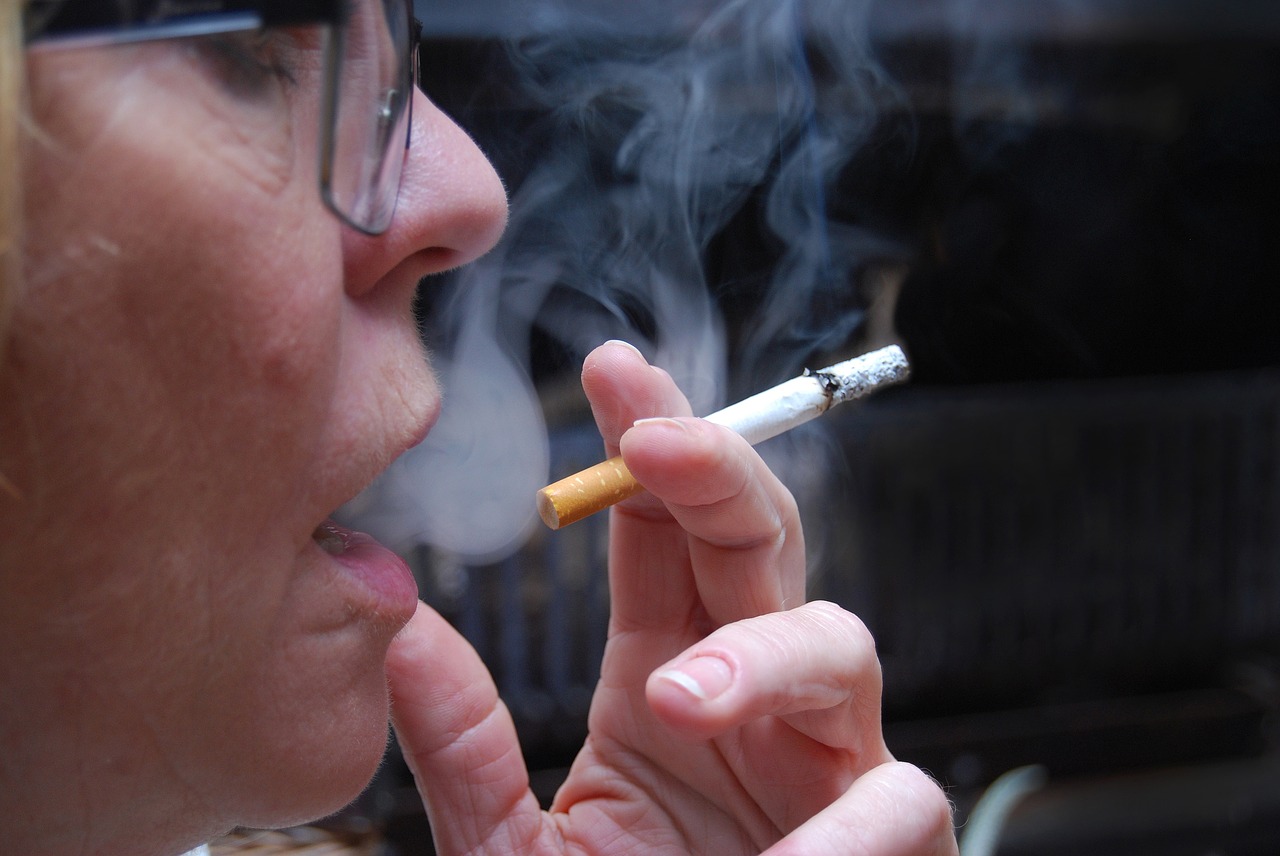
While hot weather and humidity can already put a lot of strain on your body, making it harder and harder to breathe, smoking increases your body temperature and irritates the airways which are already irritated. Smoking also alters mucus production in the body which could make it more difficult to clear respiratory irritants like pollen. It also gives you withdrawals which decrease your mood and make you less likely to follow through with your COPD treatment routine.
One of the main reasons people get back into smoking is out of boredom or they’re looking for quick relief from stress or anxiety. While smoking may seem like an easy solution, over time, it will only cause more harm than good. It’s understandable why someone would have a craving for cigarettes when they’re stuck at home, but the truth is, there are plenty of things to keep your mind busy without taking up smoking again. Check out this post where you’ll learn about 7 COPD-friendly activities to keep you busy during the quarantine.
![]()
Conclusion
Temperature and climate might not always be something you think about when it comes to managing a respiratory illness. However, according to the Environmental Protection Agency (EPA), there are 1,300 deaths per year due to heat-related illnesses and there are far more than that who are admitted to the hospital from things like heat stroke, heat edema, or heat exhaustion.
Unfortunately, due to the nature of chronic respiratory illness, COPD patients are much more likely to experience heat-related injuries. Follow some of the tips above to help you prepare for the heatwaves we’re experiencing across the country, and if you have any further concerns or you’re thinking about changing your treatment plan, be sure to reach out to your doctor or pulmonologist for guidance.
In the meantime, take some time to look at our portable oxygen concentrators. If you’re a COPD patient who loves to exercise, these devices will allow you to do so while maintaining your oxygen saturation and preventing COPD symptoms such as breathlessness, chest pain, and fatigue. Fill out the form at the side of the page and one of our respiratory specialists will reach out to you shortly.

